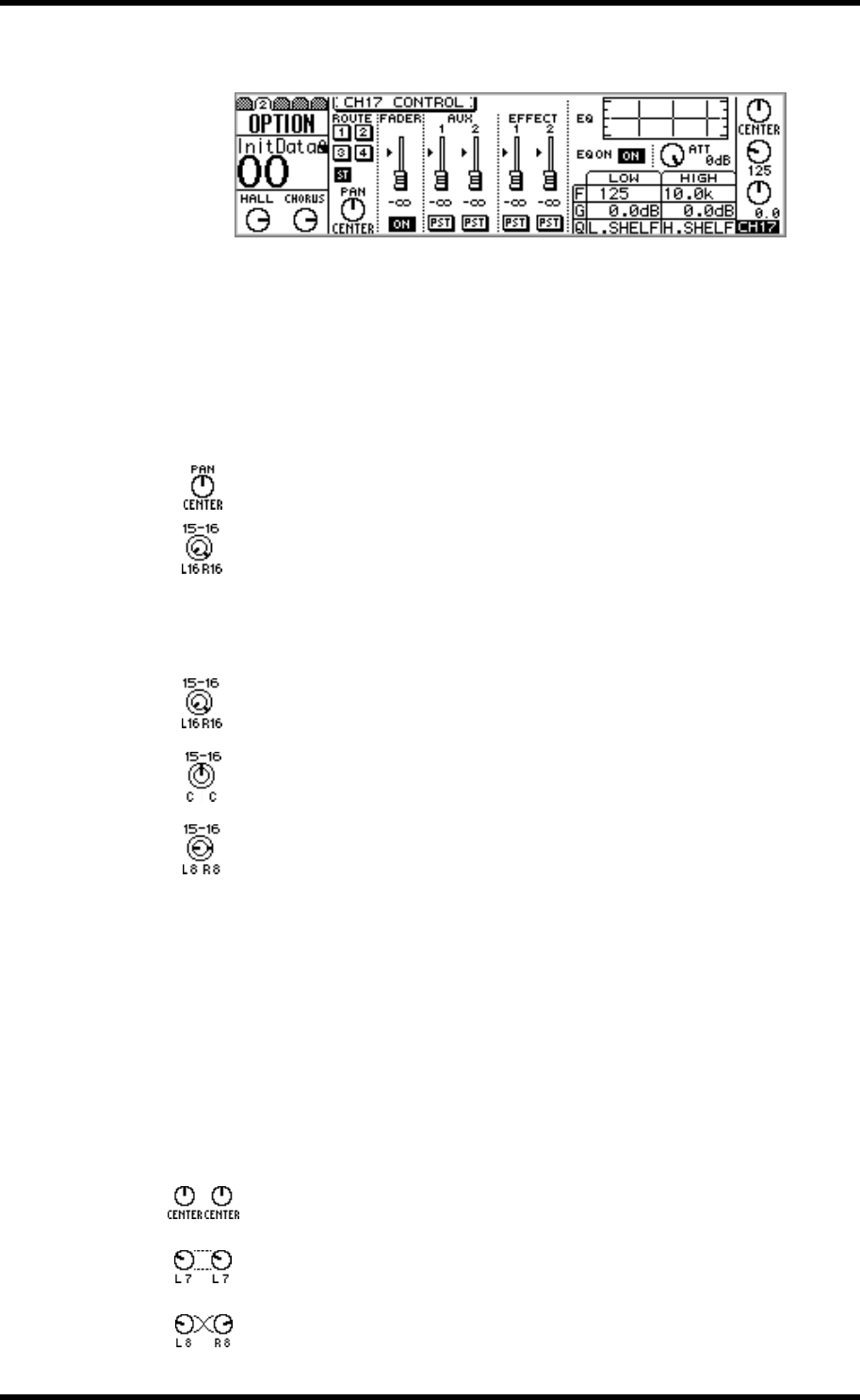
48 Chapter 5—Input Channels
01V—Owner’s Manual
be located using the [OPTION I/O] button.
Panpots can also be adjusted on this page by using the cursor buttons to select the PAN
control and the PARAMETER wheel or [–1/DEC] and [+1/INC] buttons to set it.
Including center, there are 33 pan positions.
Input channels 1 through 12 and 17 through 24 feature a single panpot, as
shown here.
Input channels 13/14 and 15/16 (and the effects returns) feature dual pan-
pots, with the inner panpots being odd-numbered channel pans 13 and 15
(effects returns left), and the outer panpots being even-numbered channel
pans 14 and 16 (effects returns right). When working with stereo signals,
these dual panpots can be used to adjust the width of stereo signals, as
shown below.
With the inner control set at L16 and the outer control set at R16, as shown
here, the width of a stereo signal is 100%.
With both controls set at CENTER, as shown here, the width of the stereo
signal is zero (i.e., mono).
Setting the controls to positions in between these two extremes allows you
to set the width of the stereo signal. To maintain a central balance, however,
you must set both controls to corresponding values. For example, L8 and
R8, or L10 and R10.
Pan Modes
The three Pan modes, INDIVIDUAL, GANG, and INV. GANG, determine how the
panpots operate on input channels 13/14, 15/16 (and the effects returns), and paired
input channels 1 through 12. Since input channels 17 through 24 cannot be paired, they
are not affected by the Pan modes.
1. Use the cursor buttons to select the MODE parameter, and the PARAM-
ETER wheel or [–1/DEC] and [+1/INC] buttons to select a mode.
INDIVIDUAL—In this mode, panpots function independently.
GANG—In this mode, panpots are ganged (i.e., linked) together.
INV. GANG—In this mode, panpots are ganged together but operation is
inverted (i.e., panpots move in opposite directions).
L16←···←L3←L2←L1←CENTER→R1→R2→R3→···→R16
Hard left
Center
Hard right


















